August 1, 1966: Phillies prevail in extra innings on Dick Allen’s walk-off inside-the-park home run
 At the dawn of the 1966 season, 24-year-old Dick Allen was entrenched as a central player on the pennant-hopeful Philadelphia Phillies. Allen burst onto the major-league stage in 1964, winning the National League Rookie of the Year Award with 29 home runs and league-leading stats in runs, triples, and total bases. He supplemented that exceptional performance with his first All-Star Game appearance in 1965. Embarking on his third full season, Philadelphia’s talented third baseman was aiming to elevate his, and his team’s, performance.
At the dawn of the 1966 season, 24-year-old Dick Allen was entrenched as a central player on the pennant-hopeful Philadelphia Phillies. Allen burst onto the major-league stage in 1964, winning the National League Rookie of the Year Award with 29 home runs and league-leading stats in runs, triples, and total bases. He supplemented that exceptional performance with his first All-Star Game appearance in 1965. Embarking on his third full season, Philadelphia’s talented third baseman was aiming to elevate his, and his team’s, performance.
The 1966 Phillies were gunning for their third pennant since joining the National League in 1883. Achieving winning records in the previous four years, including falling just short of the pennant in 1964 after a late-season collapse, they were constructed to join the 1915 and 1950 teams as league champions. On August 1, with the Houston Astros in town for a four-game series, the Phillies sat in fourth place, 5½ games behind the league-leading Los Angeles Dodgers.1
Houston, in its fifth season after joining the NL as an expansion team in 1962, had occupied the first division of the NL standings for most of the season, but had recently fallen to seventh place in the 10-team league. A total of 11 Astros players had been sidelined with substantial injuries, including All-Star second baseman Joe Morgan, who was on the disabled list with a fractured knee. “This is my 21st year in baseball,” said Astros manager Grady Hatton, “and I’ve never seen the likes of the injuries we suffered this year.”2
Fewer than 12,000 fans were on hand to witness the Monday night encounter at Connie Mack Stadium.3 Ray Culp received the starting assignment for the Phillies. The 24-year-old right-hander, in his fourth season, was in the midst of his worst major-league campaign, holding three wins and an ERA above 5. But he dominated the injury-marred Astros in the first four innings, surrendering no runs while facing one batter over the minimum.
Veteran starter Bob Bruce was on the mound for the Astros. The 33-year-old right-hander, who spent seven weeks on the disabled list earlier in the season with an eye injury, was seeking his third win in his 12th start of the year. He allowed only two baserunners in a scoreless first three innings. Cookie Rojas walked with one out in the first but Allen, batting in his accustomed fourth spot and batting .310 with 24 home runs, flied out to end the inning. In the second, Tony González stroked an opposite-field single to left but was stranded on second.
All-Star right fielder Johnny Callison led off the bottom of the fourth for Philadelphia. He had blasted 112 homers over the previous four seasons, but came into the game with just six in 1966. “The heat’s on,” Callison said. “I’d better hit a few or I’ll really hear it.”4 In his second at-bat off Bruce, he put the Phillies on the board with a long home run to right field.
Bruce retired Allen on a fly to right and struck out Bill White looking, then González hit a double up the middle. Catcher Clay Dalrymple punched a single to right, driving in González with Philadelphia’s second run, but was thrown out trying to stretch the hit into a double.
Culp took the shutout into the top of the sixth. With one out, center fielder Jim Wynn ripped a home run over the roof in left field5 to draw the Astros within one. The round-tripper was Wynn’s 18th of the season. One out later Rusty Staub singled, but the inning ended with Philadelphia on top, 2-1.
The Phillies answered in the bottom of the inning. Callison led off with his second home run of the game. Allen singled to center and took second on White’s infield single. Hatton pulled Bruce and brought in lefty Don Arlich to face left-handers González and Dalrymple. González walked, loading the bases, and Dalrymple drove in Allen and White with an opposite-field single to left. The Phillies’ lead grew to 5-1.
Houston went down in order in the seventh, but Culp began the eighth by issuing his only walk of the game, to light-hitting Bob Lillis. Pinch-hitter Félix Mantilla singled to left, bringing Wynn to the plate. Wynn hit a drive to left-center that stayed in the park but was deep enough to advance Lillis to third, from which he scored on Sonny Jackson’s sacrifice fly. It was a 5-2 game.
Barry Latman and former Phil Jim Owens kept the Astros close with scoreless innings of relief, and Culp retook the mound in the ninth seeking his first complete game of the season. After Chuck Harrison and Lee Maye stroked back-to-back singles, manager Gene Mauch pulled Culp. Larry Jackson, sporting a 10-9 record in 21 starts, was summoned to make his first relief appearance of the season with the Phillies.
Jackson ran the count to 2-and-2 on Bob Aspromonte, 6 then delivered a hanging curve that landed in the left-field seats for a game-tying home run. “I threw four perfect pitches,” Jackson said. “Then I threw the curve … one lousy pitch and he hit it out.”7
Jackson retired the next three batters, and the game headed to the bottom of the ninth. A single, sacrifice, intentional walk, and groundout put runners on first and third with two outs. Callison worked the count to 2-and-2, fouled off two pitches,8 and struck out.
Darold Knowles replaced Jackson in the top of the 10th. Wynn lined a double to left and Sonny Jackson walked. One out later, Harrison lined a sharp single to right. Wynn held at third and the bases were loaded. Terry Fox replaced Knowles and Ron Brand pinch-hit for left fielder Maye. Brand hit a foul pop fly on Fox’s first pitch and ninth-inning hero Aspromonte stepped in.
Wynn set off toward home as Fox delivered the pitch. Dalrymple applied the tag and umpire Ed Vargo called Wynn out. Third-base coach Jim Busby seethed as Wynn argued the call. “Everyone in the park knew he was safe except Vargo,” Busby said angrily.9
Owens returned for his third inning of work in the bottom of the 10th. Allen took two quick strikes, then powered a high fastball deep to center field. The ball tipped off Wynn’s glove as he crashed into the fence. Left fielder Brand hustled after the ball as a dazed Wynn lay sprawled on the grass. By the time Brand tracked down the ball and threw home, Allen had circled the bases with the winning run.
Wynn sustained a cut on the head and a dislocated left elbow and wrist. “This is the worst thing that could happen to us,” said Brand.10 Wynn joined the growing Astros’ disabled list and the team could not recover. They lost 35 of their final 58 games and finished in eighth place with a 72-90 record.
Philadelphia won the game 6-5 and swept the four-game series with the Astros. The exciting win was not enough to kickstart the rest of the season and the Phillies were not able to rise out of fourth place. The team dropped further in the standings over the next few years, and Allen and Callison were both traded shortly after the 1969 season ended. Philadelphia languished near the bottom of the standings and did not have another winning record until 1975.
The 1966 season turned out to be Allen’s best in a Phillies uniform. He blasted a career-high 40 home runs and placed fourth in NL MVP voting. Of Allen’s 351 career homers, seven were inside-the-parkers; the only walk-off was the one against the Astros. On July 31, 1972, nearly six years to the day after beating the Astros with his dramatic inside-the-parker at Connie Mack Stadium, Allen hit two inside-the-park home runs in a game for the Chicago White Sox, on his way to the 1972 American League MVP Award.
Acknowledgments
This article was fact-checked by Kurt Blumenau and copy-edited by Len Levin.
Photo credit: Dick Allen, Trading Card Database.
Sources
In addition to the sources cited in the Notes, the author consulted Baseball Reference.com and Retrosheet.org for information including the box score and play-by-play.
https://www.baseball-reference.com/boxes/PHI/PHI196608010.shtml
https://www.retrosheet.org/boxesetc/1966/B08010PHI1966.htm
Notes
1 Los Angeles, Pittsburgh, and San Francisco were statistically tied for first and Philadelphia and St. Louis were tied for fourth.
2 Ralph Bernstein (Associated Press), “Astros Lose Wynn for Season; Allen’s Homer Beats Houston,” Delaware County Daily Times (Chester, Pennsylvania), August 2, 1966: 12.
3 Connie Mack Stadium seating capacity in 1966 was 33,608.
4 Stan Hochman, “Boos and Callison’s New Look,” Philadelphia Daily News, August 2, 1966: 52.
5 In 1925 Connie Mack Stadium’s left-field bleachers were replaced with a double-decked roof terrace.
6 Allen Lewis. “Allen’s ‘Inside’ HR Jolts Astros in 10th, 6-5,” Philadelphia Inquirer, August 2, 1966: 25.
7 Stan Hochman, “Rich’s Game-Winning HR a Tough Break for Wynn,” Philadelphia Daily News, August 2, 1966: 52.
8 Allen Lewis. “Allen’s ‘Inside’ HR Jolts Astros in 10th, 6-5.”
9 Stan Hochman, “Rich’s Game-Winning HR a Tough Break for Wynn.”
10 “Rich’s Game-Winning HR a Tough Break for Wynn.”
Additional Stats
Philadelphia Phillies 6
Houston Astros 5
10 innings
Connie Mack Stadium
Philadelphia, PA
Box Score + PBP:
Corrections? Additions?
If you can help us improve this game story, contact us.

